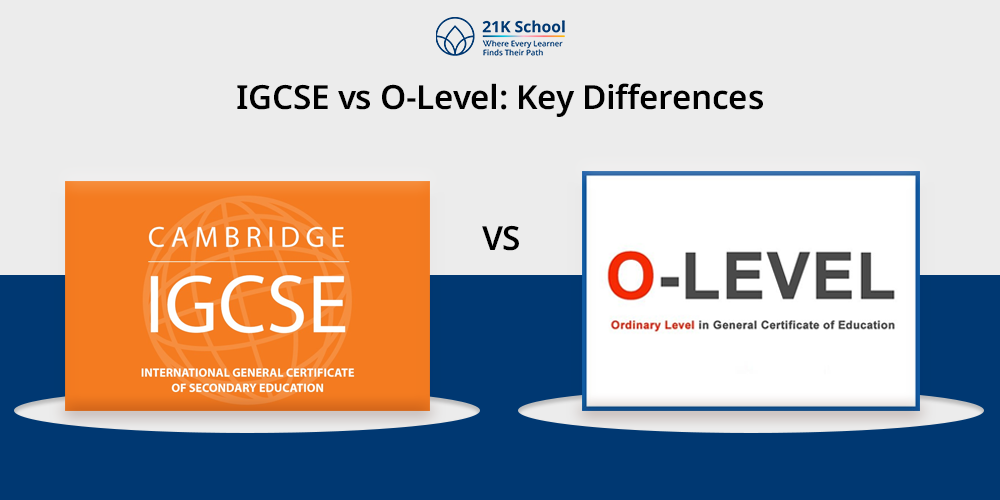
Selecting the right curriculum during one’s schooling years can have a significant impact on a student’s academic and career journey.
Two of the most popular international education systems are the IGCSE and O-Level curricula.
Both are reputable internationally and are accepted in various higher education institutions, but each has a very different approach, range of assessments, and flexibility.
This blog will simplify the IGCSE vs O-Level comparison for parents and students to help make a more informed choice.
Contents
What is IGCSE?
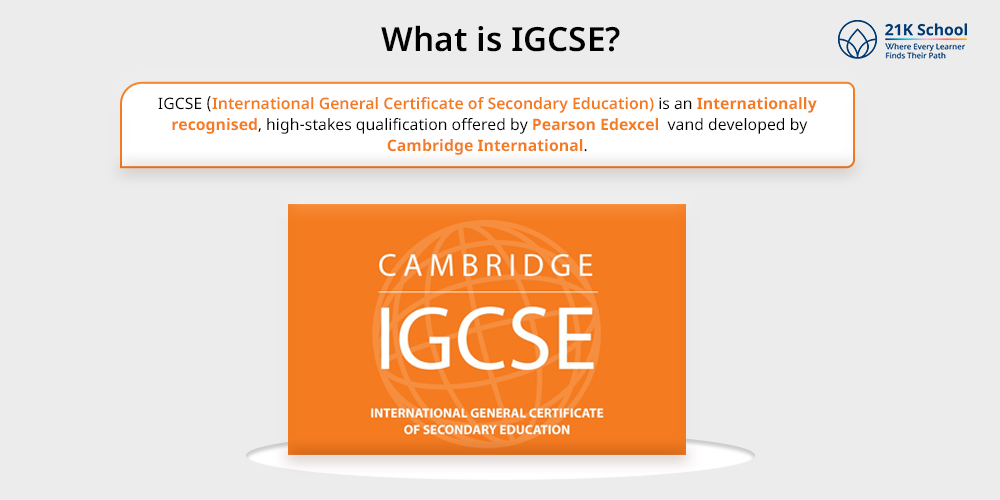
IGCSE (International General Certificate of Secondary Education) is an internationally recognised, high-stakes qualification offered by Pearson Edexcel and developed by Cambridge International.
This curriculum is generally pursued by students aged 14 to 16 and is equivalent to the UK’s GCSE (General Certificate of Secondary Education) qualification.
The IGCSE curriculum has a focus on international contexts, thinking skills and application-based learning. It allows students to choose from a wide variety of subjects.
This program provides students with the ideal foundation for continuing their education: A-Levels, IB or other pre-university programs.
What is O-Level?
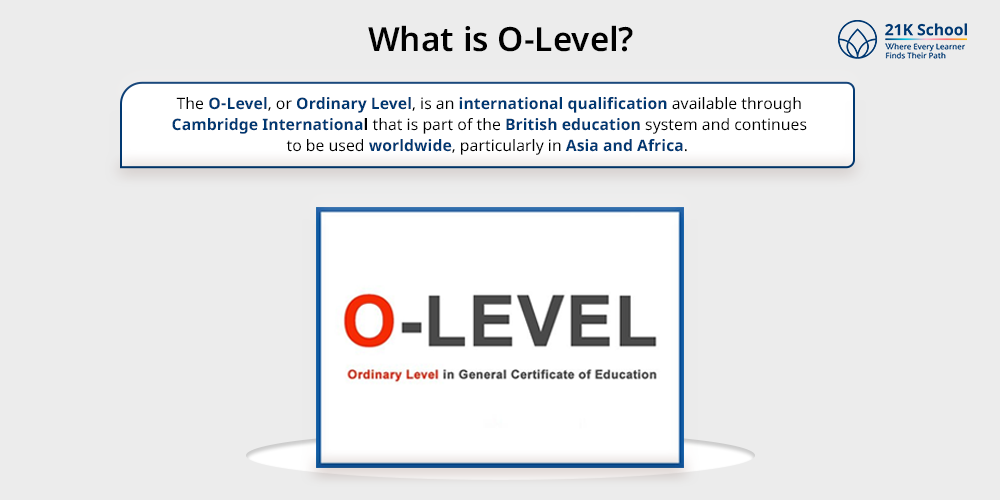
The O-Level, or Ordinary Level, is an international qualification available through Cambridge International that is part of the British education system and continues to be used worldwide, particularly in Asia and Africa.
It is more rigorous and traditional, and has a structured approach to learning. Although O-Level is also for students aged 14 to 16, it has a stronger focus on examinations and fewer choices of subjects to study.
To some extent, it is seen as more appropriate for students who excel with defined academic expectations.
IGCSE vs O-Level: Key Differences
Let us understand the key differences between IGCSE and O-Level in the following aspects:
| Feature | IGCSE | O-Level |
| Curriculum | Modern, flexible, international | Traditional, structured |
| Assessment | Exams + coursework + orals + practicals | Mainly written exams |
| Subjects Offered | 70+ subjects with combinations | Limited subject choices |
| Grading | A* to G / 9 to 1 | A* to E |
| Approach | Application-based and analytical | Theory-based and exam-focused |
| Global Recognition | Widely accepted | Accepted, but slightly more regional |
| Target Students | International, diverse backgrounds | Mostly British-influenced education areas |
| Language Support | Multiple language options | Primarily English |
| Exam Boards | Cambridge, Edexcel | Cambridge only (mainly) |
| Cost | Generally higher | More affordable |
1. Curriculum Structure
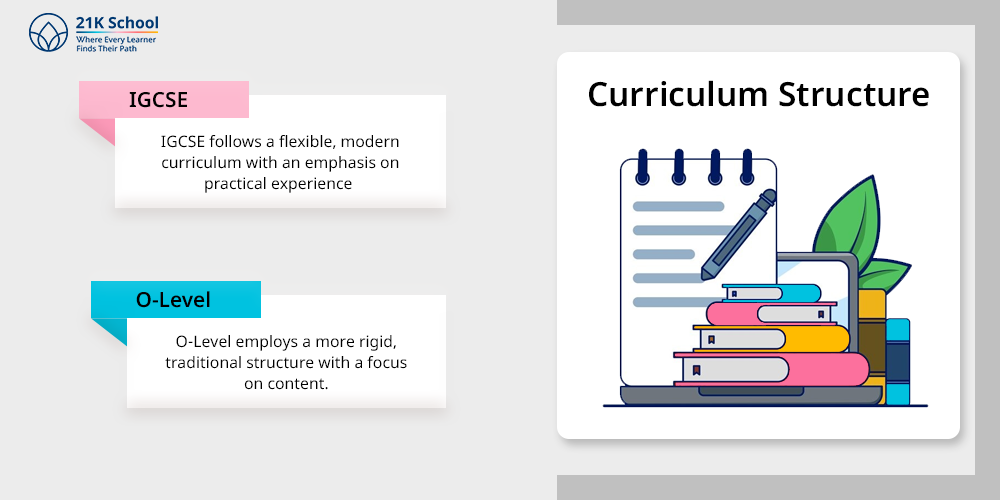
IGCSE follows a flexible, modern curriculum with an emphasis on practical experience and relevance to a global society.
O-Level employs a more rigid, traditional structure with a focus on content.
2. Assessment Style
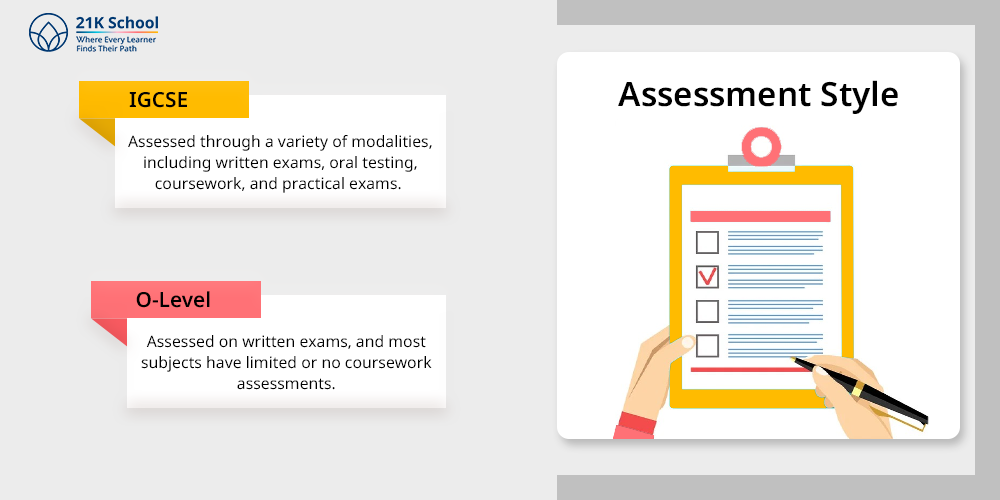
IGCSE is assessed through a variety of modalities, including written exams, oral testing, coursework, and practical exams.
O-Level is largely assessed on written exams, and most subjects have limited or no coursework assessments.
3. Subject Flexibility
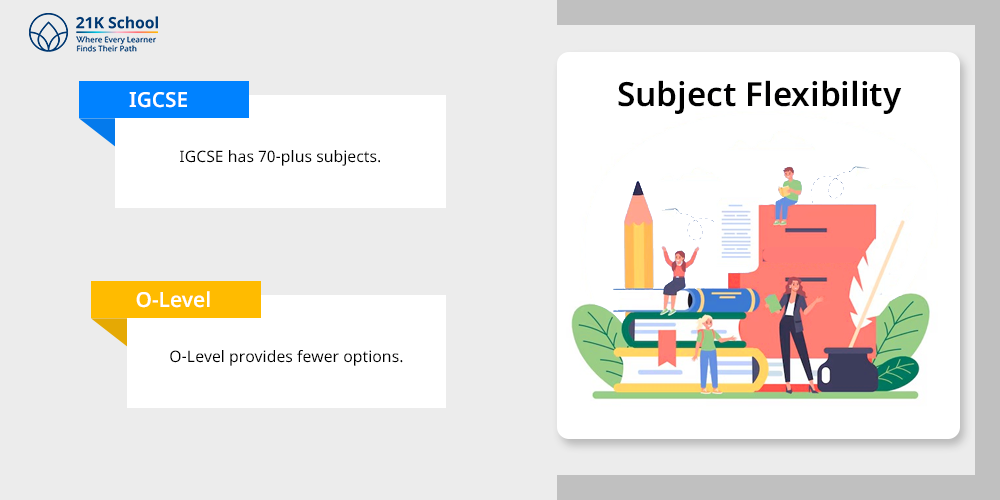
IGCSE has 70-plus subjects. Students can pick and choose combinations that relate to their interests and aspirations.
O-Level provides fewer options, and subjects have a more structured implementation, limiting student customisation.
4. Grading Scheme
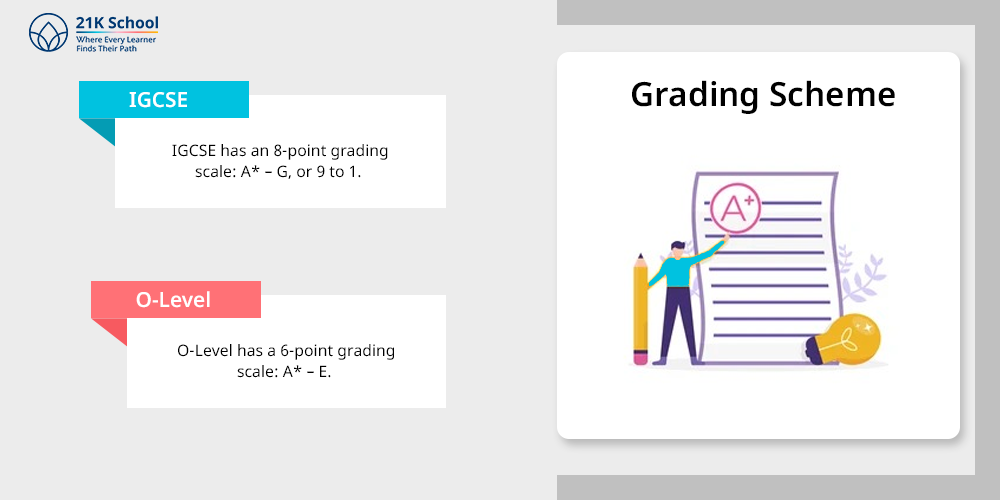
IGCSE has an 8-point grading scale: A* – G, or 9 to 1. O-Level has a 6-point grading scale: A* – E.
5. Focus and Approach
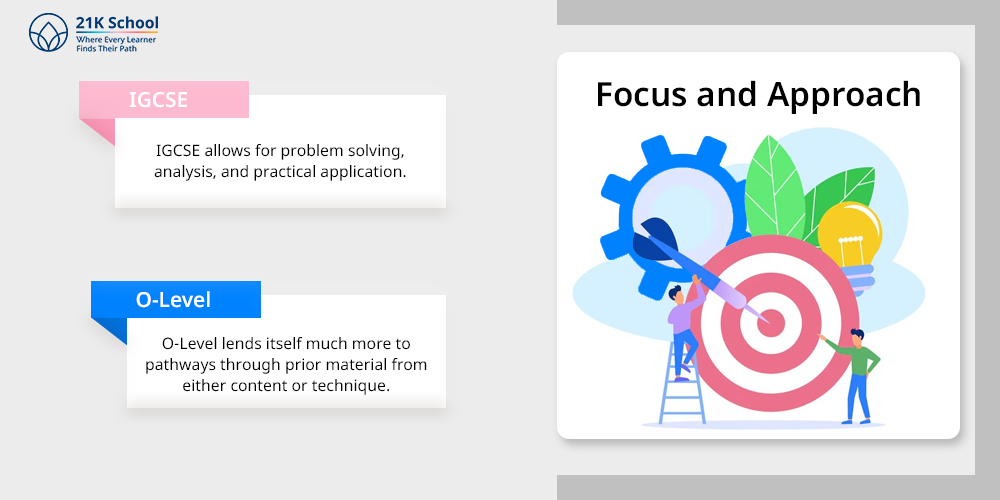
IGCSE allows for problem solving, analysis, and practical application. It encourages independent thought through the study of creative courses.
O-Level lends itself much more to pathways through prior material from either content or technique, with limited opportunity for independence or creativity.
6. Recognition
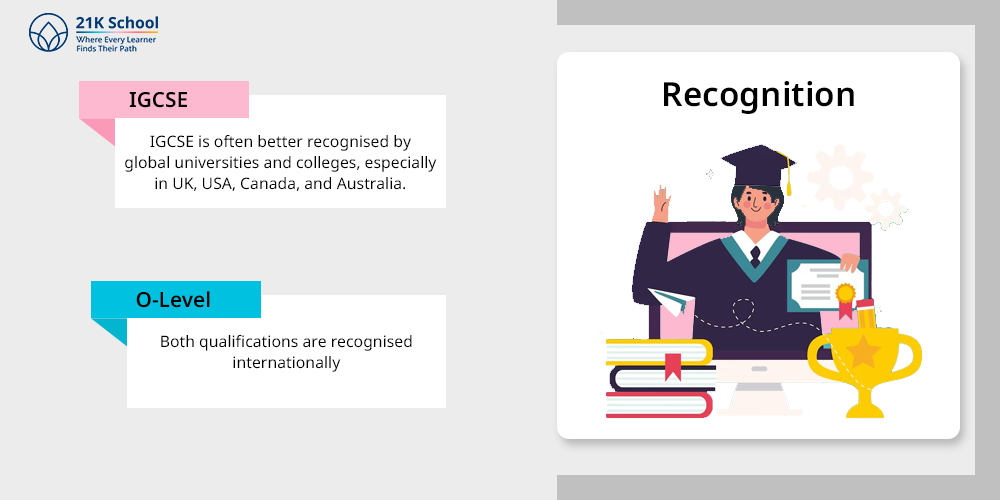
Both qualifications are recognised internationally. However, IGCSE is often better recognised by global universities and colleges, especially in countries such as the UK, USA, Canada, and Australia.
7. Target Audience
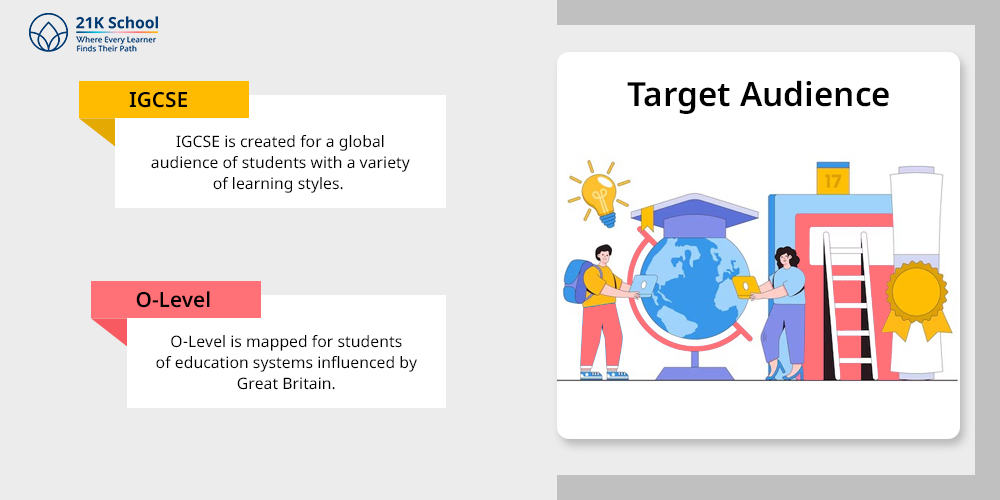
IGCSE is created for a global audience of students with a variety of learning styles.
O-Level is mapped for students of education systems influenced by Great Britain, but would potentially have more familiarity in countries like Singapore, Pakistan and Sri Lanka.
8. Language Availability
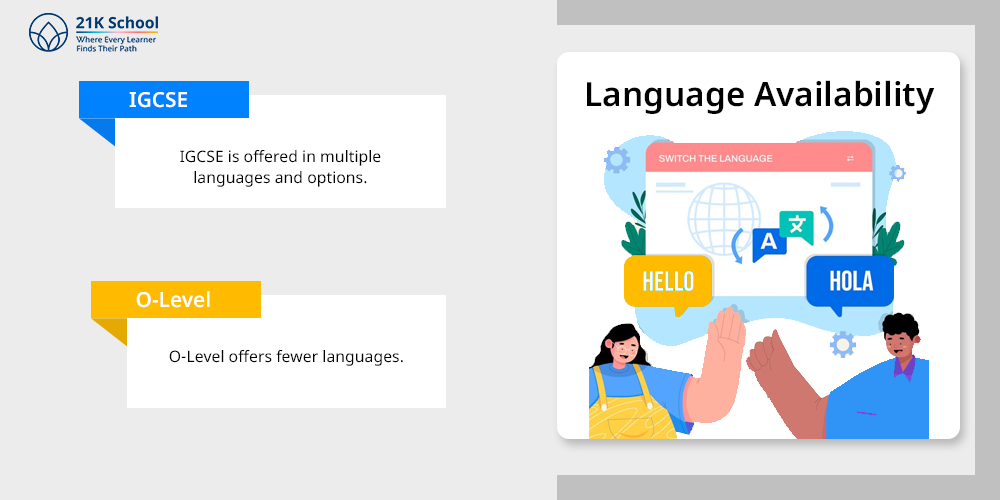
IGCSE is offered in multiple languages and options, including First Language English and Second Language English.
O-Level offers fewer languages, with English usually being the only core language.
9. Exam Boards
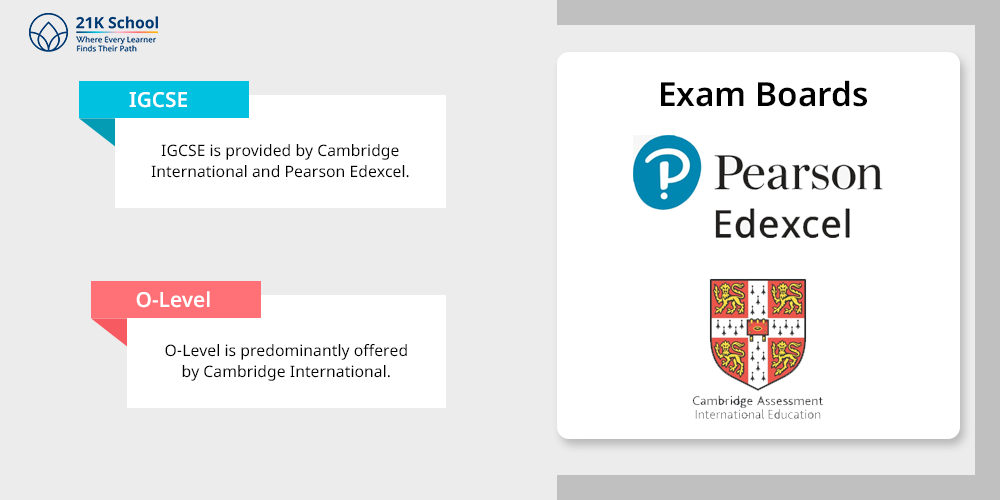
IGCSE is provided by Cambridge International and Pearson Edexcel, whereas O-Level is predominantly offered by Cambridge International.
10. Preparation for Further Studies
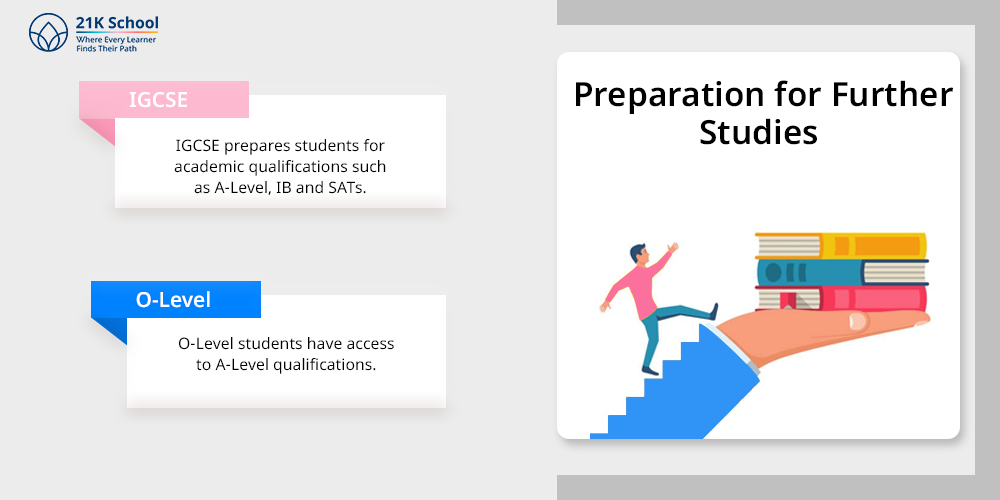
IGCSE prepares students for academic qualifications such as A-Level, IB and SATs. Students from this program have experience applying their knowledge and demonstrating analysis, which is key for further competitive examinations.
O-Level students have access to A-Level qualifications, but they will sometimes need extra support to more successfully navigate their support channels, particularly where they are looking for a more international avenue.
11. Cost & Affordability
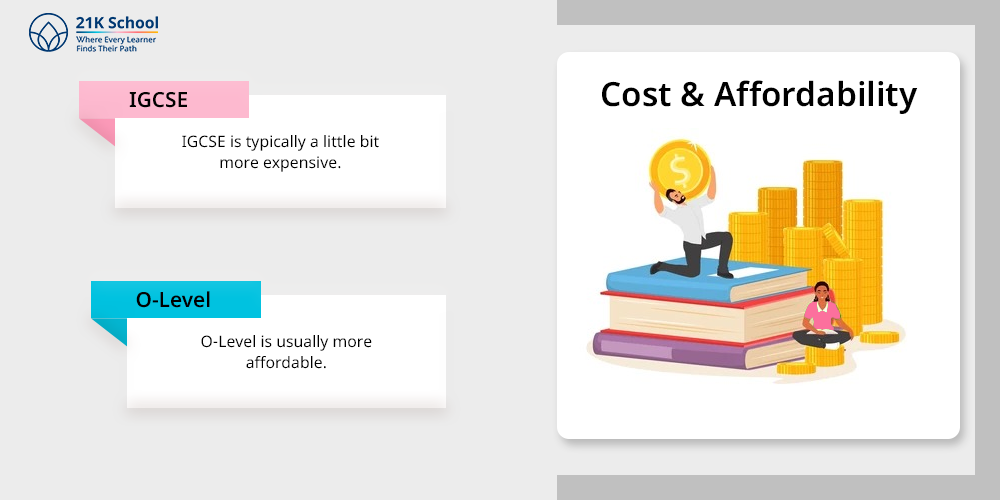
IGCSE is typically a little bit more expensive, largely because it has more access to resources, subjects, and exam options.
O-Level is usually more affordable, as a result, making education accessible in regions where affordability is a concern.
Selecting the Best Curriculum For Your Child

When the time comes to decide on IGCSE versus O-Level, consider your child’s learning style, educational interests, and long-term plans.
For example, if your child likes to learn through in-depth exploration of subjects, prefers hands-on experiences, and is considering studying overseas, then IGCSE is likely a better fit.
However, if your child prefers studying lessons with right or wrong answers where they can excel in a structured environment, or they are thinking of continuing their education in a country that emphasises O-Level, then O-Level may suit them better.
You should also consider the learning approaches, available resources, and atmosphere at the school. Some schools may be better positioned to support one curriculum, and not the other.
Final Words
Overall, both IGCSE and O-Level are recognised and reputable qualifications, and they both have their merit.
Ultimately, the question is not which qualification is better than the other; it’s which qualification is better for the child.
Don’t rush your decision; explore all possibilities, talk to teachers, and think about what best fits your child’s long-term educational goals.
Making the right decision can open up exciting avenues for your child in their future.
